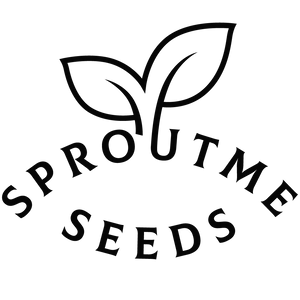Zone 2b
Zone Definition: Zone 2b is defined by the USDA Plant Hardiness Zones as regions with average annual minimum temperatures ranging from -45°F to -40°F (-42.8°C to -40°C). This zone includes parts of Alaska, northern Canada, and some high-altitude areas. The climate is characterized by extremely cold winters and short, cool summers.
General Zone Characteristics: The climate in Zone 2b features long, harsh winters and brief, cool summers. Gardeners in this zone face challenges due to the extreme cold and limited growing season, necessitating the selection of hardy plants capable of surviving these conditions.
Climatic Features
Temperature Ranges: Average minimum temperatures in Zone 2b range from -45°F to -40°F. Summers are short and cool, with average temperatures around 65°F (18.3°C).
Precipitation: Zone 2b experiences moderate annual precipitation, primarily as snow during the extended winter months. Summer rainfall is limited, which can affect gardening.
Seasons:
- Winter: The longest season, with extremely low temperatures and heavy snowfall.
- Spring: Brief and cool, often beginning late in the calendar year.
- Summer: Short and cool, offering a limited window for plant growth.
- Fall: Arrives early, with temperatures dropping rapidly as winter approaches.
Soil and Its Characteristics
Soil Types: The soil in Zone 2b is typically rocky and shallow, with low organic content. Permafrost is common, presenting additional challenges for soil preparation and planting.
Fertilization and Improvements: Enhancing soil quality is crucial. Adding organic matter, such as compost, can significantly improve soil fertility. Raised beds and containers are effective strategies for overcoming poor soil conditions and extending the growing season.
Plants Suitable for Zone 2b
Trees and Shrubs:
- Evergreens: Hardy evergreens such as Siberian pine and dwarf birch thrive in this cold climate.
- Hardy Deciduous Trees: Aspen and certain willow species can also grow well in Zone 2b.
Flowers and Ornamental Plants:
- Perennials: Arctic poppies and hardy alpine plants are excellent choices.
- Annuals: Hardy annuals like pansies and violas can withstand the cooler temperatures.
Vegetables and Fruits:
- Vegetables: Cold-hardy vegetables such as kale, spinach, and root vegetables (carrots, turnips) can be grown during the short summer.
- Fruits: Berries, including lingonberries and cloudberries, are well-adapted to the harsh climate of Zone 2b.
Garden Care Through the Seasons
Spring Tasks:
- Planting: Start seeds indoors and transplant them outside after the last frost.
- Pruning: Trim any winter damage from trees and shrubs.
Summer Tasks:
- Watering: Ensure consistent watering, as summers can be dry despite the cool temperatures.
- Pest Control: Monitor for pests that may appear during the brief growing season.
Fall Tasks:
- Harvesting: Gather vegetables and fruits before the first frost.
- Winter Preparation: Mulch plants and wrap trees to protect them from the harsh winter.
Winter Tasks:
- Protection: Use burlap wraps and other methods to shield plants from extreme cold.
- Planning: Prepare for the next growing season by planning garden layouts and ordering seeds.
Pest and Disease Management
Common Pests: Aphids and caterpillars can be problematic during the short summer.
Plant Diseases: Fungal diseases can occur due to wet conditions during spring thaw and early summer.
Organic Control Methods: Use neem oil and other organic pesticides. Companion planting can also help deter pests naturally.
Watering and Irrigation
Watering Methods: Drip irrigation and soaker hoses are effective for providing consistent moisture without wasting water.
Irrigation Systems: Install irrigation systems early in the spring before the ground fully thaws to ensure efficient watering throughout the summer.
Landscaping Tips
Planning the Plot: Design your garden with windbreaks and shelter belts to protect plants from harsh winds.
Using Native Plants: Native plants are best adapted to survive the extreme conditions of Zone 2b. They require less maintenance and are more resilient.
Creating Rest Areas: Incorporate raised beds and container gardens to maximize the use of limited space and extend the growing season.
Expert Recommendations
Gardener Interviews: Local gardeners recommend focusing on hardy perennials and using mulch to protect plant roots from extreme cold.
Useful Resources:
- Books: "Gardening in the Extreme North" by Peter Johnson.
- Websites: The University of Alaska Fairbanks Cooperative Extension Service offers valuable gardening tips for Zone 2b.
Frequently Asked Questions
FAQ:
-
Q: What are the best vegetables to grow in Zone 2b?
- A: Cold-hardy vegetables like kale, spinach, and root vegetables are ideal.
-
Q: How can I protect my plants from frost?
- A: Use mulch, burlap wraps, and cold frames to shield plants from frost.







